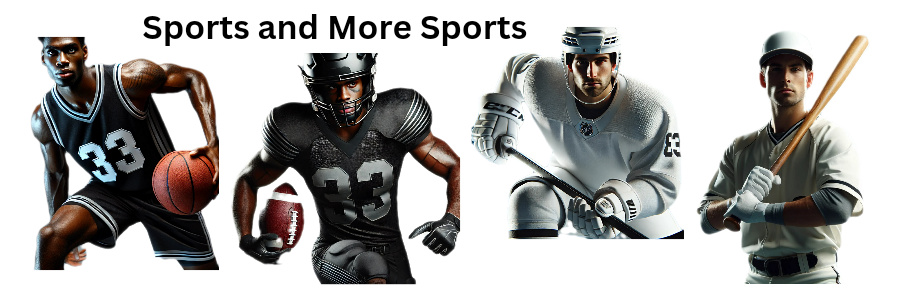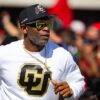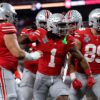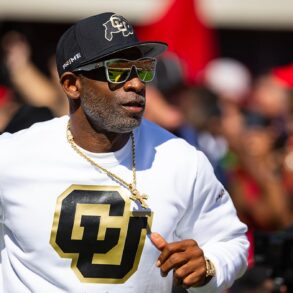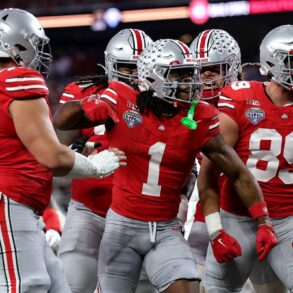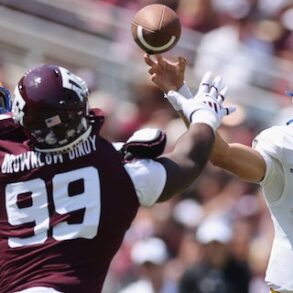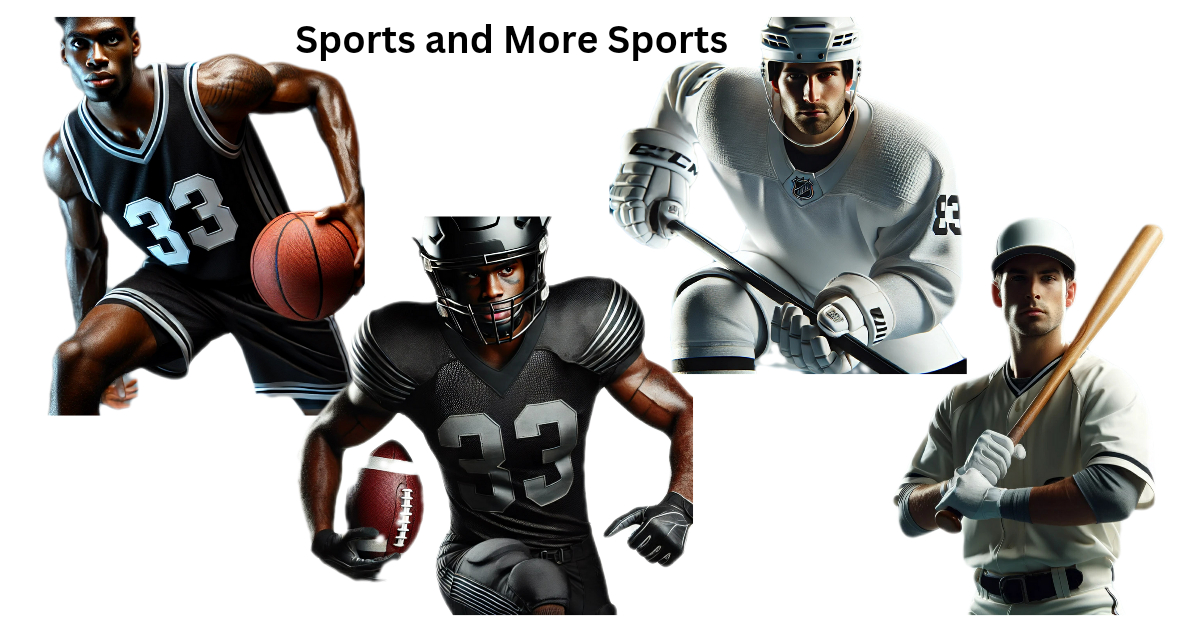ATLANTA (AP) — The way Kardell Thomas sees things, it wasn’t so much the schools as it was the system that let him down.
When thinking about the pros and cons of college players forming a union as they navigate their way through an industry that’s changing by the day, the story of the offensive lineman who has signed with four schools in five years is a good one to tell.
Thomas’ father, Karl, died in 2023 after kidney problems became too much to overcome. Kardell won’t name names, but he said he was promised help from one of his schools when his dad’s health started deteriorating.
Help never came. Thomas suffered injuries. Rumors spread about marijuana use, even though Thomas says he never failed a drug test. All-too-frequent trips to the transfer portal were laced with endless questions about whether he was durable or dependable enough.
After weaving through stops in Louisiana, Florida and Missouri, Thomas ended up with Deion Sanders, though he barely got on the field at Colorado in his final year of eligibility.
By the time he got there, it was too late anyway.
“I feel like if I could’ve had NIL in my third year, I could’ve bought my dad a kidney, and maybe he wouldn’t have died,” Thomas said of the name, image and likeness payments that are changing college sports.
Could a players’ association have made things better?
Thomas is one of around 4,000 athletes who have joined forces with what would like to be one of the most disruptive forces in a disrupted industry.
Athletes.org held a meeting with more than 50 of those players over the weekend leading up to Monday’s national title game between Ohio State and Notre Dame.
It describes itself as “the players association for college athletes” — one of two trying to establish a foothold in an industry that has the NCAA’s Student-Athlete Advisory Committee but nothing in the way of formalized athlete groups outside the NCAA tent.
One of its members is Grant House — the Arizona State swimmer whose name graces the “House settlement” that is set to dictate the terms of many of the industry’s thorniest issues: revenue sharing, NIL payments, roster limits, Title IX and more.
“It’s not just about my name on the case,” House said. “I did this for these guys around me. I did this for the other couple dozen guys in the room across the hall and all around the country, too.”
Another is Diego Pavia, the junior college-turned-Vanderbilt quarterback who sued for a fifth year of eligibility and whose plight is the tip of a potential move to allow all players a fifth year. (Pavia attended the meeting in Atlanta but did not give interviews.)
Yet another is Sedona Prince, the basketball player whose viral video of the sparse weight room at women’s March Madness in 2020 remains a bracing symbol for all that doesn’t work in college sports.
“What I care about is making a change, making a real change, which is what I’m doing,” Prince said in an interview with The Associated Press last week. “Advocating for athletes, negotiating for athletes, giving thousands and thousands of athletes generational wealth.”
Players as employees scares schools but interests the athletes
The organization’s co-founder, Jim Cavale, said the mission of athletes.org is not necessarily to have players declared employees. Still, when those who attended the meeting this weekend were asked if they’d like to know more about the pros and cons of an employment model, 94% said yes.
“It’s not ‘do the athletes want to be employees, do the athletes not want to be employees,’” he said. “It’s, how are the athletes treated, and they’ve been treated like employees for a long time.”
Many in the college space view the idea of athletes as employees as an existential threat, claiming athletic departments will have to make massive cuts to programs if forced to put hundreds of players across all sports on the payroll, earning scholarships, retirement benefits and potentially NIL money.
Those power brokers breathed a sigh of relief over the past two weeks when plaintiffs in a pair of major pushes toward an employment model — at Dartmouth and Southern California — halted their legal actions.
Cavale argues that nobody should be so sure employment is a game killer.
Some athletes, he argues, might not want that because they could owe payroll taxes on their scholarship and benefits and, without NIL money to offset that, end up in the red. Others, especially in football and basketball, might be able to make a profit.
“That’s the wideness and breadth of college athletics,” Cavale said. “So many schools, so many sports, so many athletes. It’s not just a one-size-fits-all thing.”
Names behind the NCAA lawsuit hope decisions will benefit everyone
Though House and Prince have their names on the lawsuit, most of the decisions being made because of it are being hashed out by lawyers, judges, conferences and the NCAA.
“It’s been five years of every day being different than the day before it,” House said. “It’s about adapting and adjusting and being malleable … and about working for solutions that actually help everyone.”
Prince said there are things she’d like to see — for instance, she hopes schools will max out the 22%, or $20.5 million, they’ll be allowed to pay players next school year “because if you don’t pay your student-athletes, you’re not going to have student-athletes.”
Her confidence in that happening isn’t all that high, though, which is why she’s also pushing for a bigger seat at the table.
“Historically, over and over, time and time again, unless you force their hand to make a change, they’re not going to do it by themselves,” she said. “So, I hope, I pray it could be an equitable and fair system that feels right.”
___
AP Basketball Writer Doug Feinberg in Miami contributed to this report.
___
Get poll alerts and updates on the AP Top 25 throughout the season. Sign up here. AP college football: https://apnews.com/hub/ap-top-25-college-football-poll and https://apnews.com/hub/college-football
This post was originally published on this site be sure to check out more of their content.

